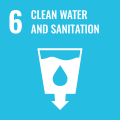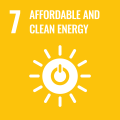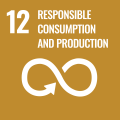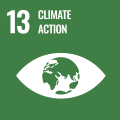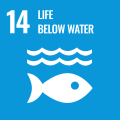According to the IMO’s statistics, the global shipping industry produces over 1 million tons of CO2 emissions every year, accounting for about 2.9% of the CO2 emissions worldwide. The shipping industry plays an important role in reducing global carbon emissions. In recent years, the UN Climate Change Conference and EU have called for the control of global warming at 1.5℃, and many international initiatives and organizations have encouraged enterprises to set reduction targets and measures in response to the goal of net zero emissions by 2050.
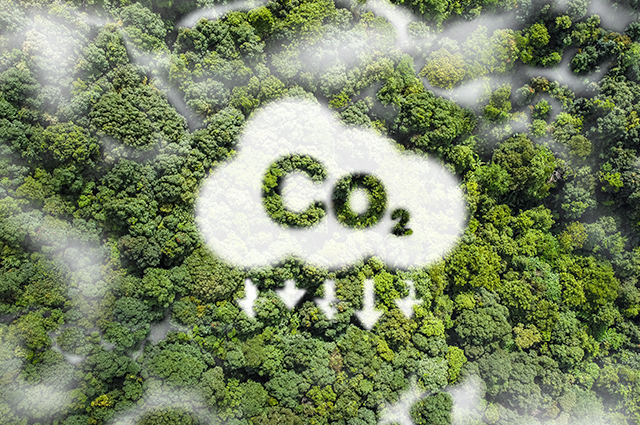
■Total Energy Consumption for Organizational Operations
| Energy Type | Heating Value in 2021 | Heating Value in 2022 |
|---|---|---|
| Total heavy fuel oil consumption (GJ) | 47,355,563.01 | 48,598,418.37 |
| Energy intensity (GJ/NT$ thousand) | 0.151 | 0.137 |
| Proportion of heavy fuel oil | 94.01% | 94.11% |
| Total (GJ) | 50,371,782.22 | 51,639,486.66 |
■Energy Conservation Strategies
| Operational Scope | Energy Conservation Strategies |
|---|---|
| Onshore business locations |
|
| Container terminals |
|
| Reefer containers |
|
| Fleet |
|
The vessel energy consumption of the last
2022
Fuel Consumption
0 Ton
2021
Fuel Consumption
0 Ton
2020
Fuel Consumption
0 Ton
Note: Note: Due to the Company's implementation of appropriate energy management measures, despite a 12% increase in business volume in 2022, there was no significant increase in the total heating value. The energy intensity was 0.137 (GJ/NT$ thousand), reduced by 9.00% in comparison to 2021.
Management of Vessels’ Carbon Emissions
Yang Ming continues to go above and beyond international regulatory requirements by adopting management measures such as hull optimization, the introduction of new eco-friendly vessels, optimal ship speed control, the use of smart monitoring systems, and the modification of existing ships. The CO2 emission intensity of the operating vessels in 2022 was reduced by 59.54% compared to 2008, early attaining the IMO’s goal of a 40% reduction by 2030 and proceeding towards the goal of a 70% reduction by 2050.
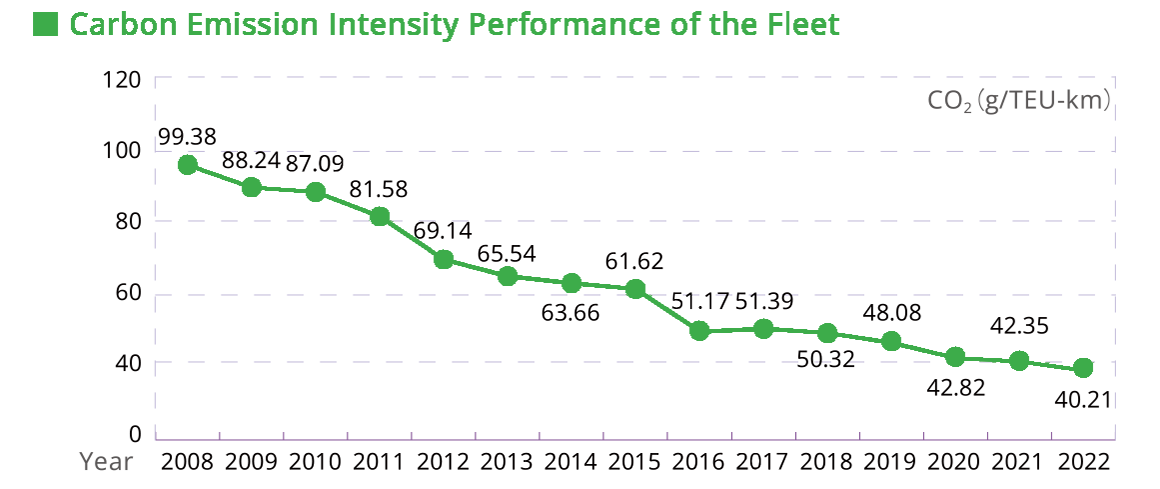
Although the fleet’s CO2e in 2022 was 102,194.7764 (tons CO2e) higher than that in 2021, the carbon intensity was reduced by 2.14 g/TEU-km, showing a 5.05% improvement, thanks to the fact that the unit transport volume in 2022 was higher than that in 2021.
COUNTERMEASURES
The IMO approved the new “Energy Efficiency Existing Ship Index (EEXI)” and “Carbon Intensity Indicator (CII)” regulations at the MEPC 76 meeting held via video conference from June 10 to 17, 2021, which will take effect on January 1, 2023. For the IMO’s strategies to reduce the GHG emissions of vessels, on the technical aspect, the EEXI is adopted; on the operational aspect, the CII is adopted. By calculating the “EEXI” and “CII,” correction plans are developed for vessels with poor performance, and the vessels are included in the SEEMP.
The following are the measures adopted by the Company in response to the EEXI and CII:
| Issue | Energy Efficiency Existing Ship Index (EEXI) |
Carbon Intensity Indicator (CII) |
|---|---|---|
| Regulation Description and Planning | EEXI must be submitted to Classification Societies for recognition for international energy efficiency certificates (IEEC, for one-time verification like EEDI). |
Vessels’ annual CII values must be calculated annually and reported. The vessels are rated from A to E based on their performance every year. If any vessel is rated D for 3 consecutive years or E in one year, correction plans must be developed. |
| Suggested Improvement Methods from Classification Societies |
|
|
| Yang Ming’s Practices |
|
|
New Vessels’ EEDI
| Name/Model of New Vessel | Number of Vessels Delivered during 2013~2021 | Number of Vessels Delivered in 2022 | EEDI (gCO2/ton-Nm) |
|---|---|---|---|
| YM Express / E Type | 5 | 0 | 16.22 |
| YM Celebrity /C Type | 10 | 0 | 15.70 |
| W1 type | 10 | 0 | 9.22 |
| W2 type | 5 | 0 | 8.88 |
| W3 type | 5 | 0 | 8.52 |
| T1 type | 5 | 0 | 8.06 |
| T1 type | 4 | 5 | 7.87 |
| Average | 10.78 | ||
GHG INVENTORY
Yang Ming has actively promoted green shipping. In 2021, the Company introduced the ISO 14064-1 GHG inventory and acquired third-party verification. Based on the inventory results, we promoted and planned the setting of GHG emission reduction targets and measures for the Company. In 2022, the Company continued to complete the ISO14064-1 GHG inventory for the vessels owned and operated by the Company, which was third-party verified and Taiwan Accreditation Foundation (TAF)-certified.

Scope 1
Category1
Direct emissions
Emissions(tCO2e)
4,034,299.5445

Scope 2
Category2
Indirect GHG emissions from imported energy
Emissions(tCO2e)
11,200.4093
GHG emissions from vessels

Total scope 1 and 2 emissions
4,045,499.9538
(tCO2e)
Scope 3

Category3
Indirect GHG emissions from transportation
Emissions(tCO2e)
3691.7967

Category4
Indirect GHG emissions from the Company's use of products
Emissions(tCO2e)
591,848.4237

Category5
Indirect GHG emissions from the use of the Company's products
Emissions(tCO2e)
52,501.2755



